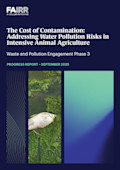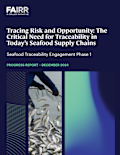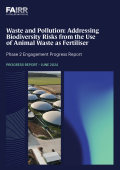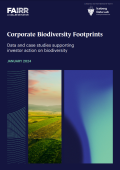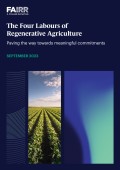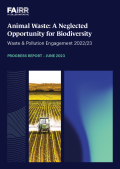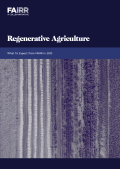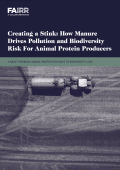Overview
Aquaculture is the fastest food production system in the world, and farmed fish have outnumbered wild-caught fish since 2022. Some 70% of salmon are now farmed and production is expected to grow.
As salmon are a carnivorous species, the cost and make-up of their feed is a critical part of the farming process. Farmed salmon are fed with fishmeal and fish oil (FMFO), predominantly derived from wild-caught fish.
Since nearly 90% of fisheries are overfished or exploited at maximum levels according to the UN Food and Agriculture Organization, relying on wild-caught fish as feed ingredients poses material operational, regulatory and reputational risks to salmon producers and their investors.
This report discusses the outcomes and insights from the final year (Phase 3, 2024/25) of FAIRR’s Sustainable Aquaculture engagement, supported by 61 investors with US$12.7 trillion in combined assets.
FAIRR’s engagement with seven of the top 10 global salmon producers shows that the wild-caught fish dilemma has not been solved yet. Companies tend to focus their efforts on improving feed efficiency, rather than reducing their absolute reliance on fish-based feed ingredients.
The findings of this report can help investors:
understand the multiple operational, regulatory and reputational risks salmon producers are exposed to by sourcing wild-caught fish for feed;
encourage their portfolio companies to reduce their absolute use of wild-caught fish, and prioritise research and investment in novel alternative feed ingredients and technologies; and
drive a broader transition in the aquaculture industry, by encouraging companies to farm aquatic species that have a lower environmental impact and to include plant-based alternatives in their product portfolios.
Report highlights
Key findings from Phase 3 of the Sustainable Aquaculture engagement:
Disclosures related to feed formulations have increased overall. All seven companies now disclose the percentage of trimmings used, compared to two doing so in 2020. However, disclosures of absolute FMFO use in feed are more limited.
None of the seven engaged companies have a target to reduce the absolute amount of fish-based ingredients used in feed, despite five of them having production growth targets in their latest disclosures. This leaves doubt as to how this will be achieved without a sustainable feed supply.
To mitigate their reliance on wild-caught fish, companies have mainly used two strategies - increasing their use of trimmings and novel alternative feed ingredients.
Trimmings: All companies want to increase their use of fish trimmings, but it is not clear from their disclosures or the engagement dialogues how much more trimmings are still available.
Novel alternative feed ingredients: No single novel alternative feed ingredient has emerged that could fully replace FMFO, with companies citing trade-offs, ranging from price and scalability, nutrition, carbon footprint and consumer acceptance.


